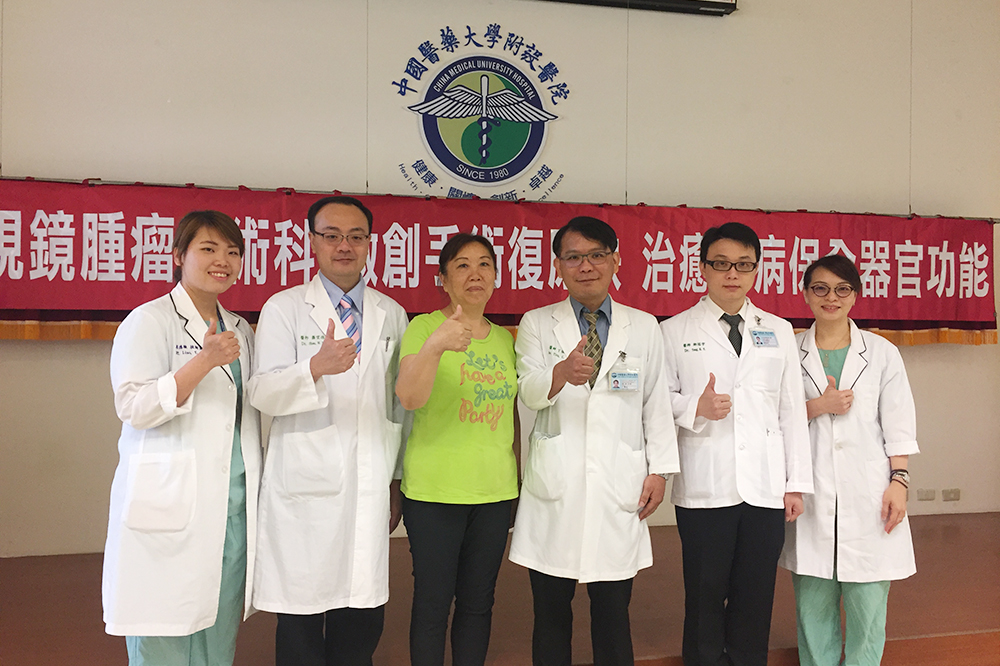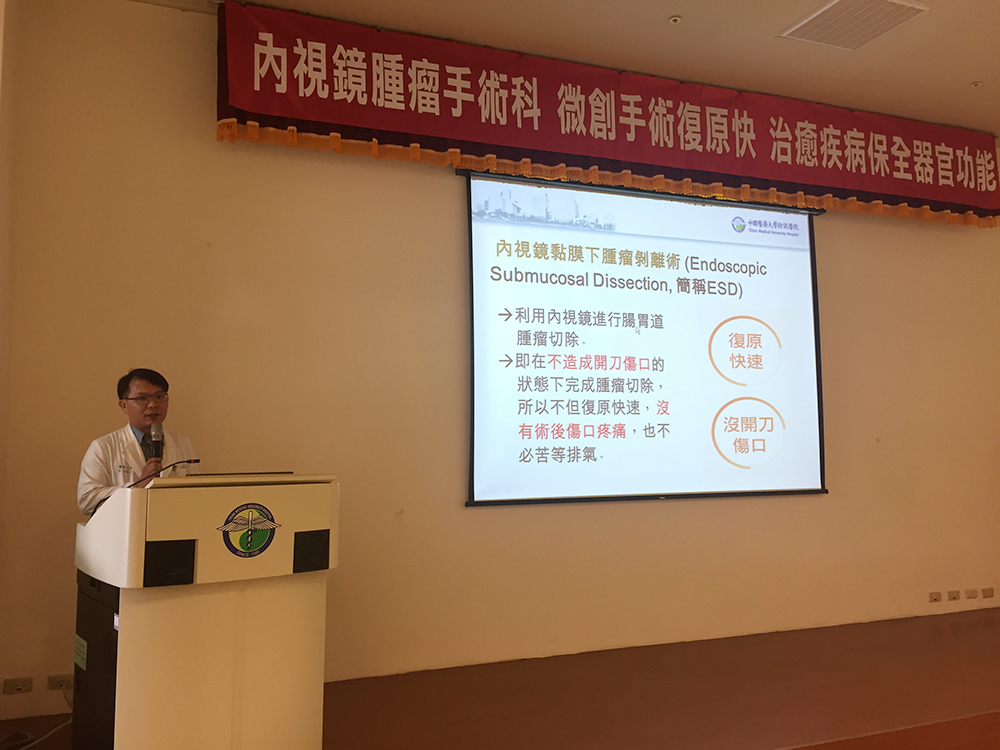News and Award
About CMUH
Endoscopic Submucosal Dissection (ESD). The organ function was preserved and the patients had satisfied life quality

Would you worry about life quality or digestive function if you receive partial gastrectomy for gastric subepithelial tumor (SET)? At China Medical University Hospital there are over seven hundreds patients received endoscopic submucosal dissection (ESD) for early cancer and subepithelial tumor of alimentary tract. Most of the patients restarted oral intake on the day after surgery, and were able to be discharged from hospital after one-to-two days of observation. The organ function was preserved and the patients had satisfied life quality.
Ms.Lee is a 57 year-old woman. She was diagnoised with gastric subepithelial tumor (6.7cm in diamter) near cardia during esophagogastroduodenoscopy (EGD) eaxm in March 2017. Gastrointestinal stromal tumor (GIST) without distant metastasis was diagnoised after endoscopic ultrasound (EUS) and computed tomography exam. After evaluation the director of Endoscope Tumor Surgery Division Dr.Chun-Fu Ting suggested endosocpic resection can remove the tumor completely and the organ function can be preserved. Ms.Lee then received endoscopic submucosal dissection for the tumor in April 2017. She recovered well from the operation and there was no evidence of recurrence during follow up by esophagogastroduodenoscopy and computed tomography.
According to Dr.Ting, gastric subpeithelial tumor was usually smooth buldging tumor under endoscopic view. The origin of the tumor can be from mucosa, muscularis mucosa, submucosa, muscularis propria or serosa layer. Some of SETs are mestastatis lesion. Most of SETs were benign lesions like cyst, lipoma, ectopic pancrease. Some the lesions were maligant or had potential of malignancy like GIST, neuroendocrine tmor, leiomyosarcoma, lymphoma, or Schwannoma. In clinically regular endosocpy follow up for lesion below 1cm in diameter. EUS can be helpful to distinguish which layer was the origin, and deep biopsy or fine needle aspiration can also be useful to in diagnosis.
 In management of GIST, we need to know if there were metastatic lesion, the tumor size, and the mitotic rate under microscopy to select appropriate theraty including tumor resection or target theray. Tumor resection was recommanded if the lesion size above 2cm. In the past this kind of lesion can only be resected by traditional surgery. Some patient may receive total gastrectomy if the tumor is large and near cardia of stomach. For now some of this cases can be treated with ESD and most of the complication during procedure like hemorrhage and hollow organ perforation can be managed with endosope without the need to consult surgeon. Most of the patients received endosopic surgery can regain oral intake on the day after surgery and be discharged from hospital after one-to-two days of observation.
In management of GIST, we need to know if there were metastatic lesion, the tumor size, and the mitotic rate under microscopy to select appropriate theraty including tumor resection or target theray. Tumor resection was recommanded if the lesion size above 2cm. In the past this kind of lesion can only be resected by traditional surgery. Some patient may receive total gastrectomy if the tumor is large and near cardia of stomach. For now some of this cases can be treated with ESD and most of the complication during procedure like hemorrhage and hollow organ perforation can be managed with endosope without the need to consult surgeon. Most of the patients received endosopic surgery can regain oral intake on the day after surgery and be discharged from hospital after one-to-two days of observation.
At China Medical University Hospital Dr.Ting had used endoscopic submucosal dissection to treat over seven hundreds of alimentary tract early cancer and tumors including two hundreds of SET. He is an well-known expert of endosopic surgery in Taiwan.
Chun-Fu Ting Director
China Medical University Hospital,
Division of Gastroenterology and Hepatology,
Director of Surgical Endoscopy Division



